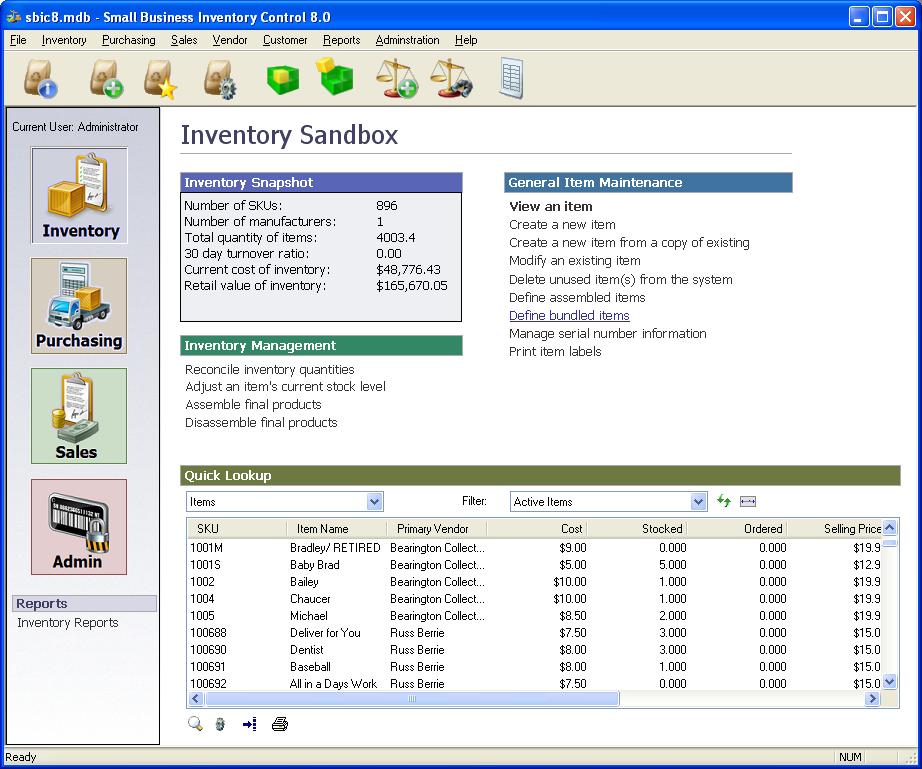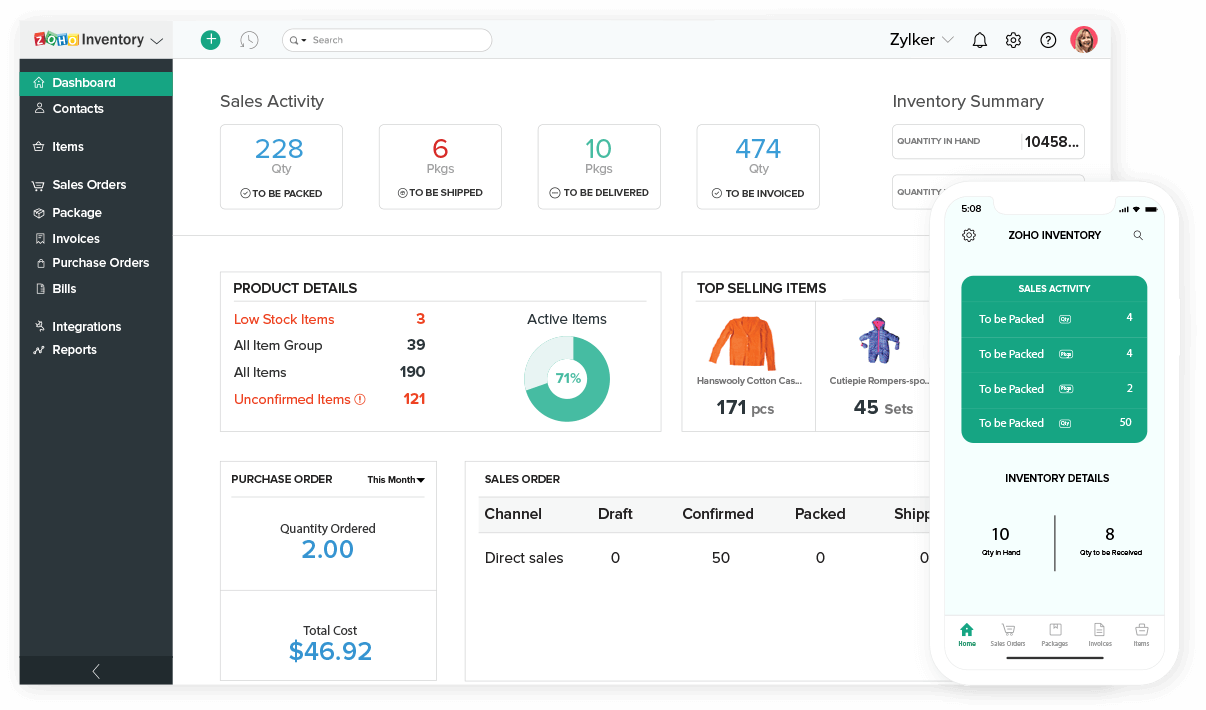Business inventory software has emerged as a game-changer in inventory management, offering a comprehensive solution to streamline tracking, organization, and analysis. This powerful tool empowers businesses to gain real-time visibility into their inventory levels, optimize stock levels, and make informed decisions that drive efficiency and profitability.
With its advanced features and customizable options, business inventory software adapts seamlessly to the unique needs of various industries, from retail and manufacturing to healthcare and hospitality. By leveraging the latest technologies, these software solutions empower businesses to automate inventory processes, reduce manual errors, and gain valuable insights that drive growth.
Inventory Management

Inventory management is a crucial aspect of any business that involves the storage, tracking, and management of physical goods. Business inventory software plays a vital role in streamlining these processes, enhancing efficiency, and optimizing inventory levels.
Inventory software automates many of the tasks associated with inventory management, such as:
- Stock tracking:Real-time monitoring of inventory levels, including stock on hand, allocated stock, and available stock.
- Order management:Tracking purchase orders, sales orders, and inventory movements, ensuring accurate order fulfillment and timely delivery.
- Warehouse management:Optimizing warehouse operations, including bin location tracking, cycle counting, and inventory replenishment.
li> Demand forecasting:Predicting future demand based on historical data and market trends, enabling businesses to make informed decisions about inventory levels.
Best Practices for Implementing Inventory Software
To ensure a successful implementation of inventory software, it is essential to follow best practices:
- Define clear goals and objectives:Identify the specific challenges and areas that the software aims to address.
- Select the right software:Evaluate different software options based on the business’s specific needs, size, and industry.
- Integrate with existing systems:Ensure seamless integration with other business systems, such as ERP, accounting, and CRM, to avoid data silos.
- Train staff thoroughly:Provide comprehensive training to all users to ensure they understand the software’s functionality and best practices.
- Monitor and evaluate performance:Regularly track key metrics to measure the effectiveness of the software and identify areas for improvement.
Features and Benefits: Business Inventory Software
Business inventory software is a tool that helps businesses track and manage their inventory. It can be used to track inventory levels, manage orders, and generate reports. Inventory software can help businesses save time and money, and improve their efficiency.
Some of the key features of business inventory software include:
- Inventory tracking: Inventory software can track inventory levels in real time. This information can be used to generate reports that show how much inventory is on hand, how much is on order, and how much has been sold.
- Order management: Inventory software can help businesses manage orders. It can be used to track the status of orders, generate invoices, and process payments.
- Reporting: Inventory software can generate a variety of reports. These reports can be used to track inventory levels, analyze sales trends, and identify areas for improvement.
There are many benefits to using inventory software for businesses. Some of the benefits include:
- Improved efficiency: Inventory software can help businesses improve their efficiency by automating tasks such as inventory tracking and order management.
- Reduced costs: Inventory software can help businesses reduce costs by identifying areas where inventory levels are too high or too low.
- Improved customer service: Inventory software can help businesses improve customer service by providing real-time information on inventory levels. This information can be used to ensure that customers are getting the products they need when they need them.
There are many different types of inventory software available. Some of the most popular types include:
- Cloud-based inventory software: Cloud-based inventory software is hosted on the internet. This means that businesses can access their inventory data from anywhere with an internet connection.
- On-premises inventory software: On-premises inventory software is installed on a business’s own servers. This gives businesses more control over their data, but it can also be more expensive than cloud-based inventory software.
- Open-source inventory software: Open-source inventory software is free to use and modify. This can be a good option for businesses that are on a tight budget.
The type of inventory software that is best for a business will depend on its specific needs. Businesses should consider factors such as the size of their business, the number of products they sell, and their budget when choosing inventory software.
Integrations and Customization

Business inventory software can seamlessly integrate with other essential business systems, such as accounting software, enterprise resource planning (ERP) systems, and customer relationship management (CRM) systems. This integration enables real-time data sharing, eliminating manual data entry and reducing errors.
Customization is another key aspect of inventory software. Businesses can tailor the software to meet their specific requirements, such as adding custom fields, creating unique workflows, and modifying the user interface. This flexibility ensures that the software aligns precisely with the business’s unique processes and operations.
Flexibility and Scalability
Flexibility and scalability are crucial in inventory software. Businesses need software that can adapt to changing business needs and handle fluctuations in inventory levels. The software should be able to accommodate growth and expansion without requiring significant reconfiguration or additional investment.
Reporting and Analytics

Business inventory software provides robust reporting and analytics capabilities that empower businesses to gain valuable insights into their inventory performance. These reports and analytics help businesses optimize inventory levels, reduce costs, and make informed decisions to improve their overall operational efficiency.
Inventory data can be leveraged to generate a wide range of reports, including:
- Stock Status Reports:Provide real-time visibility into inventory levels, including on-hand quantities, allocated quantities, and available quantities.
- Inventory Turnover Reports:Calculate inventory turnover rates, which indicate how efficiently inventory is being sold and replaced.
- Inventory Aging Reports:Identify slow-moving or obsolete inventory items that may need to be discounted or disposed of.
- Inventory Valuation Reports:Determine the total value of inventory on hand, using various costing methods such as FIFO (First-In, First-Out) or LIFO (Last-In, First-Out).
- Inventory Forecast Reports:Predict future inventory needs based on historical data, demand patterns, and seasonality.
By analyzing these reports, businesses can identify trends, patterns, and areas for improvement. For example, they can identify products that are overstocked or understocked, optimize safety stock levels to prevent stockouts, and reduce inventory carrying costs by eliminating slow-moving items.
Inventory Analytics for Informed Decision-Making
Inventory analytics provide businesses with actionable insights that help them make informed decisions. These analytics can be used to:
- Improve Demand Forecasting:By analyzing historical sales data, seasonality, and market trends, businesses can create more accurate demand forecasts, which are crucial for optimizing inventory levels.
- Optimize Inventory Levels:Inventory analytics help businesses determine the optimal inventory levels to maintain, considering factors such as demand variability, lead times, and safety stock requirements.
- Reduce Inventory Costs:By identifying slow-moving or obsolete inventory items, businesses can reduce carrying costs, free up warehouse space, and improve cash flow.
- Enhance Customer Service:Accurate inventory data enables businesses to fulfill customer orders promptly, reducing the risk of stockouts and improving customer satisfaction.
Overall, business inventory software with robust reporting and analytics capabilities empowers businesses to gain valuable insights into their inventory performance, make informed decisions, and improve their overall operational efficiency.
Industry-Specific Considerations

Businesses across different industries face unique challenges when managing inventory. Business inventory software can be tailored to meet the specific needs of each industry, addressing challenges such as:
- Tracking high-value or perishable inventory in retail and healthcare
- Managing complex supply chains and just-in-time inventory in manufacturing
- Handling seasonal inventory fluctuations in hospitality and agriculture
By understanding the specific requirements of different industries, inventory software providers can develop solutions that optimize inventory management processes, reduce costs, and improve customer satisfaction.
Case Study: Inventory Management in Retail, Business inventory software
In the retail industry, businesses must manage a wide range of inventory, from high-value electronics to perishable food items. Inventory software helps retailers track inventory levels, optimize stock levels, and prevent stockouts. For example, a leading retail chain implemented inventory software that reduced inventory shrinkage by 15% and increased sales by 5% through improved inventory visibility and forecasting.
Future Trends and Innovations

The future of business inventory software is bright, with a number of emerging trends shaping the way businesses manage their inventory.
One of the most significant trends is the rise of artificial intelligence (AI) and machine learning (ML). These technologies are being used to automate many of the tasks associated with inventory management, such as forecasting demand, optimizing stock levels, and generating reports.
AI and ML in Inventory Management
- AI can be used to analyze historical data to identify patterns and trends in demand. This information can then be used to forecast future demand and optimize stock levels.
- ML can be used to automate the process of generating reports. This can save businesses time and money, and it can also help to ensure that reports are accurate and up-to-date.
Another important trend is the increasing adoption of cloud-based inventory software. Cloud-based software is hosted on a remote server, which means that businesses can access it from anywhere with an internet connection.
Cloud-based Inventory Software
- Cloud-based inventory software is more flexible and scalable than on-premises software. This means that businesses can easily add or remove users, and they can also scale their software to meet their changing needs.
- Cloud-based inventory software is also more secure than on-premises software. This is because cloud providers have a vested interest in keeping their data centers secure.
Finally, we are also seeing a growing trend towards the adoption of mobile inventory software. Mobile inventory software allows businesses to manage their inventory from anywhere, using a smartphone or tablet.
Mobile Inventory Software
- Mobile inventory software is more convenient than traditional inventory software. This is because businesses can use it to scan barcodes, track inventory levels, and generate reports from anywhere.
- Mobile inventory software can also help businesses to improve their customer service. This is because they can use it to check stock levels in real-time and to place orders for out-of-stock items.
These are just a few of the trends that are shaping the future of business inventory software. As these trends continue to evolve, we can expect to see even more innovative and efficient ways to manage inventory.
Outcome Summary
In conclusion, business inventory software is an indispensable tool for businesses seeking to optimize their inventory management practices. By embracing the power of technology, businesses can unlock a wealth of benefits, including improved accuracy, reduced costs, enhanced customer satisfaction, and a competitive edge in today’s dynamic marketplace.
General Inquiries
What are the key benefits of using business inventory software?
Business inventory software offers numerous benefits, including improved inventory accuracy, reduced stockouts and overstocking, optimized purchasing and storage, enhanced customer satisfaction, and valuable data for informed decision-making.
How does business inventory software integrate with other business systems?
Modern business inventory software solutions seamlessly integrate with other business systems, such as accounting software, e-commerce platforms, and CRM systems, enabling real-time data sharing and streamlined operations.
What are the key features to look for in business inventory software?
When selecting business inventory software, consider features such as inventory tracking, stock level alerts, purchase order management, reporting and analytics, barcode scanning capabilities, and customization options.